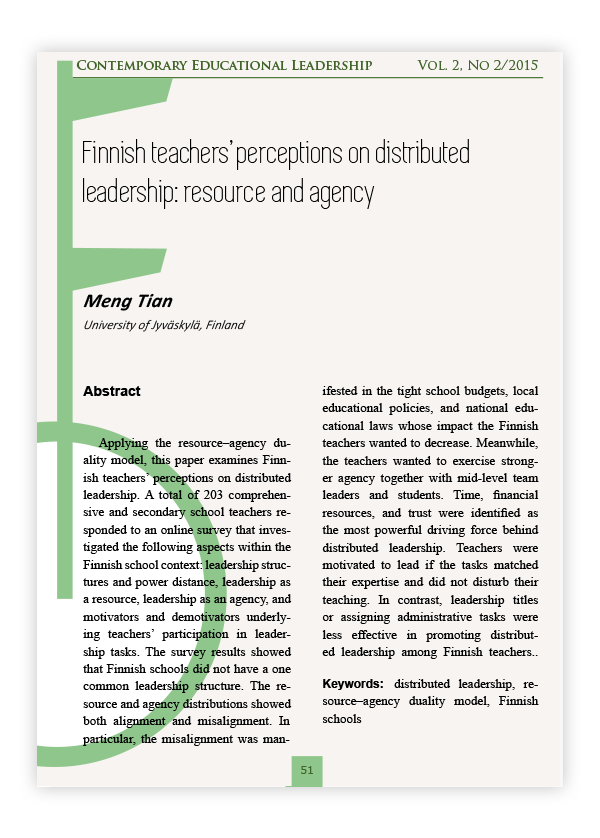Finnish teachers' perceptions on distributed leadership: resource and agency

Applying the resource–agency duality model, this paper examines Finnish teachers’ perceptions on distributed leadership. A total of 203 comprehensive and secondary school teachers responded to an online survey that investigated the following aspects within the Finnish school context: leadership structures and power distance, leadership as a resource, leadership as an agency, and motivators and demotivators underlying teachers’ participation in leadership tasks. The survey results showed that Finnish schools did not have a one common leadership structure. The resource and agency distributions showed both alignment and misalignment. In particular, the misalignment was man-ifested in the tight school budgets, local educational policies, and national educational laws whose impact the Finnish teachers wanted to decrease. Meanwhile, the teachers wanted to exercise stronger agency together with mid-level team leaders and students. Time, nancial resources, and trust were identi ed as the most powerful driving force behind distributed leadership. Teachers were motivated to lead if the tasks matched their expertise and did not disturb their teaching. In contrast, leadership titles or assigning administrative tasks were less effective in promoting distributed leadership among Finnish teachers.
Keywords: distributed leadership, resource-agency duality model, Finnish schools